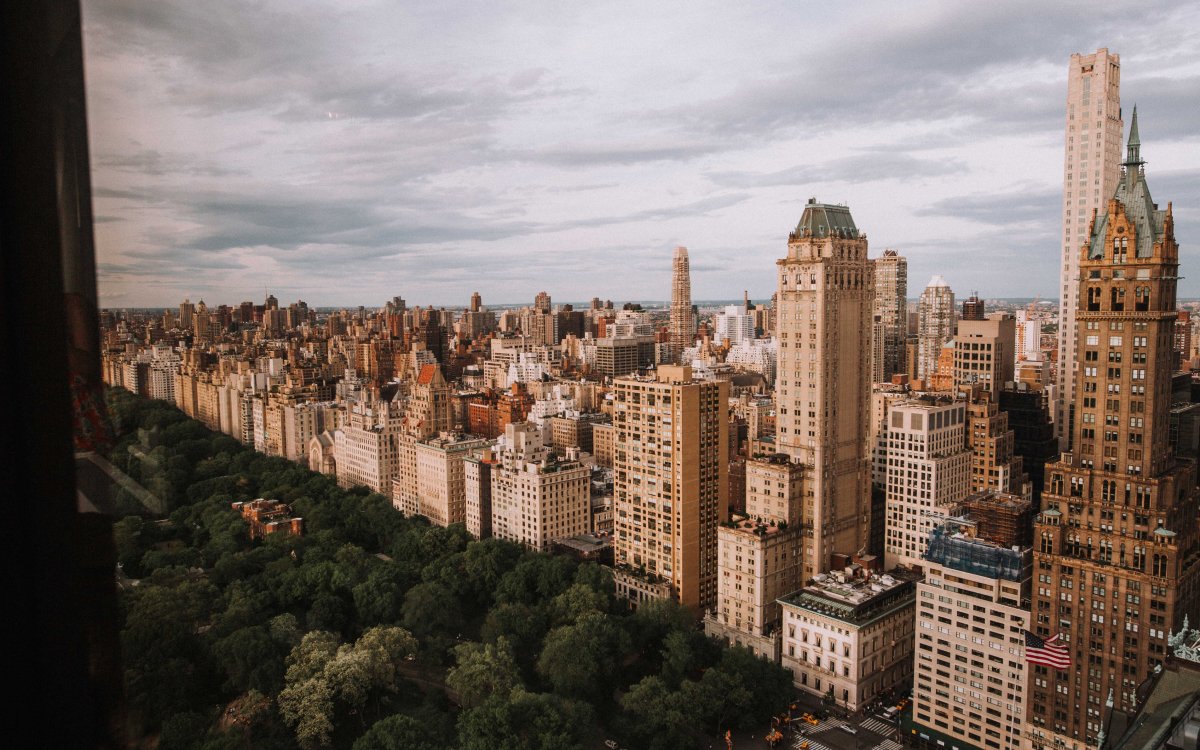Mobile app designers (and developers, for that matter) log a lot of screen time. Between work, researching for work, and going about their everyday lives, it’s actually a bit tough to get away from all those screens. We spend our lives on smartphones and tablets, or on laptops designing for smartphones and tablets.
While these same screens provide an endless source of inspiration for designers, it’s also nice to get a change of scenery. Sometimes, we may even find those very sources are actually stifling our creativity, or overwhelming us with infinite possibilities. In those times, we just need to step away to get a different perspective.
Luckily, there are plenty of places to recharge your brain and find some fresh inspiration that are completely unplugged. Picture it: no charge cords, no dying batteries, and no notifications. It sounds so peaceful, it’s almost like a beach vacation.
Here are 7 unplugged sources of mobile design inspiration to check out.
The Artist’s Way
Throughout the 1980’s, writer Julia Cameron spent a lot of time thinking and teaching about unblocking creativity. Eventually, she put her thoughts down on paper, resulting in a brilliant guide called The Artist’s Way. She takes readers — ahem, artists — through a series of exercises built to determine the source of the person’s creative struggle, and then offers up a detailed series of tasks to break down those barriers.
The main tool she wants every artist to use to their advantage (in perpetuity, even after you’ve finished the course) is something she calls Morning Pages: three pages of stream-of-consciousness writing, every single morning. She says if you’re doing them, they’re working — even if you don’t know it yet. This is an exercise she still does every day and strongly advocates on a regular basis.
As you move through the 12-week course, she introduces other tools, like the Artist’s Date, which is time you set aside to specifically focus on your art, whether it’s music, writing, painting, or (of course) designing mobile apps. Everything she outlines is designed to help artists rediscover their passion and take steps to become better artists.
Author Elizabeth Gilbert has said that she wouldn’t have been able to write Eat, Pray, Love without The Artist’s Way. Entrepreneur Tim Ferriss has used it. Millions of people have read it and completed the exercises. It’s a bestseller for a reason — it works. (Read more about our love for The Artist’s Way here.)
While this is primarily targeted toward artists struggling with some sort of creative block, it’s truly suited for anyone who wants to flex their creative muscles. She talks a lot about writers because that’s her background, and also the background of many of her friends and colleagues (for example, she was once married to director Martin Scorsese).
Designers of all types can benefit from completing this course, but if you don’t want to commit to it, at least try writing some stream-of-consciousness thoughts every day. Don’t bother crossing things out or worrying about penmanship. Just write something down.
Nature
It’s often said that the best solutions come when you’re not thinking about the problem. This is why creatives are encouraged to get up from their desks and take a walk around the building (or the park) when they’re feeling stuck on an issue at work. It gets the blood flowing, gives you a change of scenery, and helps your brain rest for a minute.
The part of this advice that is often overlooked is the inspiring capabilities of nature itself. Just think about how many picturesque, breathtaking views are within reach for you. Maybe you live near a park, or work next to a gorgeous body of water (lake, ocean, or otherwise), or maybe the landscapers just do a great job on the gardens outside your office. Whatever the case may be, get outside and breathe in the fresh air.
There are plenty of things that stifle creativity and inspiration (like stress, fatigue, and fluorescent lighting), but you’d be amazed how quickly a few minutes outside in nature will help you solve a design problem you were stuck on, or come up with a brand new mobile app design. Look at the flowers, do some deep breathing exercises, or take a walk. Do whatever you feel like you need at that moment, and then head back inside and get back to work.
Your Very Own Neighborhood
Not all of us live or work in areas with sprawling fields or parks. Some of us live and work downtown, where green space is a little bit harder to come by — and even if you do have some, it will still be pretty noisy. But not having a lot of natural sights to look at shouldn’t derail your search for unplugged design inspiration.
One of the coolest parts of living or working in a metropolitan area is the architecture. Some of the buildings are old and gothic, others are new and modern, but they can all inspire us in different ways. Sometimes just the feeling you get of being in a city is enough to push your creative boundaries and get your brain moving in a new direction.
Walking around your neighborhood (provided that’s a safe thing for you to do) could be just the inspiration you need for your newest mobile app design — or perhaps it will inspire your next one.
Your Local Art Museum
Not every city has an art museum, but if you’re in (or near) a big city, you’re almost guaranteed to have one, and the chances are good that at least part of it is free (or nearly so). Walking around an art museum can provide endless sources of inspiration because of the significant differences in design philosophy, color, and style.
Additionally, larger art museums will have a rotation of visiting exhibits, and while these typically cost extra money, they’re often times completely incredible and absolutely worth the money.
For example, in 2018, an exhibit by Japanese artist Yayoi Kusama called Infinity Mirrors traveled around the world. It featured sculptures, pieces of art made from everyday objects, and most popularly, rooms full of objects surrounded by mirrors, so that when you looked in them, everything around you was reflected back at you infinitely.
Nearly every museum that was lucky enough to feature the Infinity Mirrors exhibit sold out quickly, leaving a waiting list full of disappointed people. It was so beautiful, awe-inspiring, and breathtaking that people were often times completely stunned into silence upon entering the rooms — particularly the dark rooms. In case you missed it, but want to get a dose of mind-blowing, inspiring artwork, you can check it out here:
A word of warning: there are some strobing light effects in one of the rooms.
Your Local Library
One could argue that libraries are not totally unplugged, as you can have access to computers and WiFi inside, but if you’re making a conscious effort to avoid those things, you can certainly tailor your experience to be that way — just stick to the books or magazines.
Libraries are stuffed full of inspiring pieces of literature and art. You can easily spend hours looking through source material for whatever your chosen subject matter is, and when you think you’ve exhausted the resources, you’ll probably find more.
For example, if your newest mobile app design will be for a museum of modern art app, you may want to incorporate some modern art philosophies in your design detail. Learning about various aspects of modern art may point you towards a particular artist, which may lead you to a theme and perhaps a color palette, and shape your entire mobile app.
Trade Magazines
As fashion designers will tell you, magazines can be a great source of design inspiration and industry news. They might be looking at Vogue, but there will be plenty of tech magazines for mobile app designers to pour over. You can check out industry trends, read what the experts have to say about shifts in mobile app design, and see where successful mobile app designers got their ideas from.
If you’re not sure where to start, ask your colleagues (or boss) if they recommend any in particular. You can also check with any trade groups you’re a part of, or do some simple Googling (once you’re plugged back in, of course). The Proto.io staff likes Eye on Design and Communication Arts.
Another thing trade magazines are good for is continuing education, which is extremely important for a myriad of reasons — one of which is simply keeping on top of current trends. Designers who fall behind will eventually see their careers slow down because their work is not reflective of current design ideals or is not taking new hardware capabilities into consideration.
Given that this is the 21st century and almost everything is digital, trade magazines in physical form are harder to come by. If you’d like to use this as an unplugged form of inspiration, you probably have to do a bit of work ahead of time. You may need to check the website to see what it would take to get a physical copy, or — if you’re really dedicated to the idea of being unplugged — print out the articles you want to read.
The Coffee Shop
Coffee shops sometimes let local artists display their work for a period of time. It’s a great way for the artist to get a bit more exposure while helping the coffee shop connect to the community and create a comfortable atmosphere. And of course coffee shops are notorious for their plush couches, fun music, and vast array of delicious beverages.
Larger chain coffee shops might not do this, so you may have to visit a local business, or smaller chain. If you know of a business in your area that will do this, it can be a great way to source some design inspiration. Check out the art on the walls, get yourself a coffee refill, and listen to the music. You’ll come up with some new ideas in no time at all.
Putting Your New Mobile App Design Inspiration to Work
While you’re unplugged, make sure you bring a pad of paper and a pencil to take notes, make sketches, and map out ideas. Since you’re making a conscious decision to leave your phone in your pocket, you’ll want to have a way to jot down anything that pops into your head before it flies right out.
Once you’ve completed your screen-break and are ready to get back to work, look at your sketches and start creating your mobile app prototype. Mobile app prototyping is a great way to work out your design before handing it over to the developers. It will save you time for sure, but it will also save money because all that back-and-forth and development tweaks are costly.
If this is your first time using Proto.io, we have plenty of tips and guides and even a 15-day full-featured free trial to get you going. Don’t forget to check out our ready-to-use templates if you’re looking to create something quickly or this is your first go at prototyping. When you’re done, send your testing link to as many people as you can so you can work out all those bugs.
And of course, send us your thoughts! We love hearing feedback from our users — both positive and negative. It all leads to us creating a better, more useful prototyping product for students, designers, developers, product managers, entrepreneurs, and everyone in between.
Where do you go to get unplugged mobile design inspiration? Let us know by tweeting us @Protoio!










